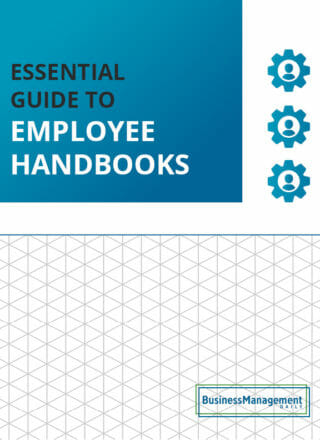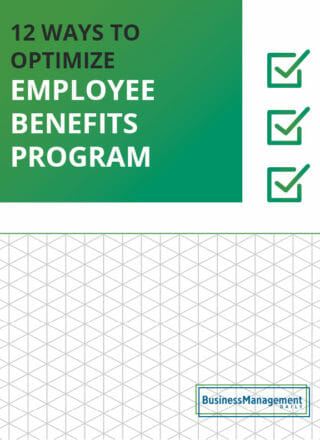Preventing employee misconduct in the workplace
 The impact of employee misconduct on your organization
The impact of employee misconduct on your organization
The term “employee misconduct” covers inappropriate behaviors, from minor infractions to serious offenses that can harm the company’s reputation, finances, or staff safety. While the severity of acts varies, the common denominator is violating the employer’s rules, regulations, policies, or code of conduct.
As all types of employee misconduct affect the organization in some way, companies need to address the issue. The employee handbook should outline behavioral expectations and the subsequent disciplinary action taken when not followed. This proactive approach warns employees and discourages misconduct.
A written-out company policy also promotes consistency and fairness. Handling infractions “by the book” gives the company more solid legal footing. Similar acts get treated in the same manner regardless of the offender.
Let’s examine the types of employee misconduct, their consequences, and how to prevent problems.
General misconduct
People get in trouble at work for a multitude of reasons. Most employee behavior, however, does not warrant immediate termination. Management and/or human resources handle this employee misconduct through established disciplinary procedures (more on this later).
General misconduct (also known as simple misconduct) involves comparatively minor infractions that do not tend to hurt the company or its people drastically. While leaders cannot let the employee’s actions slide, the situation lacks the sense of urgency of more egregious behaviors.
Common types of general misconduct include:
- Tardiness
- Absenteeism
- Chronic negativity
- Mild neglecting of duties
- Rudeness
- Dress code violations
- Excessive phone usage on company time
- Gossip
- Inappropriate language
- Smoking in non-designated areas
Gross misconduct
The second form of misconduct is gross misconduct. As the name implies, acts in this category are very serious and can potentially seriously harm the organization and its members.
Gross misconduct requires swift but thorough attention. Depending on the nature of the incident, offenders may be subject to immediate dismissal, and legal action might be necessary.
Behaviors often considered gross misconduct include:
- Theft
- Embezzlement
- Destroying company property
- Sexual harassment
- Bullying
- Threats of violence
- Physical altercations
- Stalking
- Extreme insubordination
- Intentional negligence
- Failure to follow health and safety protocols
- Revealing trade secrets
- Breaching confidentiality
- Knowingly engaging in a conflict of interests
- Falsifying information or data
- Misuse of company credit card
The disciplinary process for general misconduct
When bad behavior goes unchecked, it continues and spreads because nobody fears repercussions. With assistance from legal counsel, organizations benefit from laying out what happens when employees break the rules.
This guide to dealing with employee misconduct keeps the punitive procedure fair and consistent. It eases some of the burden placed on managers and human resources by eliminating guesswork on what to do.
Companies often employ a progressive discipline system for simple misconduct. In this arrangement, the severity of punishment increases when a worker fails to correct the behavior in question.
Progressive discipline policy often starts with a verbal warning that draws the employee’s attention to the infraction. Creating awareness may be enough to change the behavior, such as a new hire understanding she must put away her cell phone during work hours.
A heads-up also informs the offender that management is watching. Once employees who wear sweatpants realize the boss is keeping tabs, they might start coming in in proper attire.
If the verbal warning fails, one or more written warnings will occur. This step usually has a more formal format and more significant consequences.
It may involve creating a performance improvement plan and stating in detail what might happen if workplace misconduct continues (probation, suspension, demotion, etc.).
Companies typically provide managers with a template for written warnings. Standard paperwork ensures consistency and thoroughness, and meticulous documentation at all stages reduces claims of improper handling.
Exact outlines vary by workplace, but standard components include:
- The name and position of the employee
- The name and title of the person writing the warning
- The date of the write-up
- The offense
- The policy being violated, often with a copy of what is stated in the employee handbook
- A summary of prior action taken regarding this issue, such as verbal warnings
- A statement letting the employee know where this write-up will be filed and who within the company will be receiving a copy
- Space for the employee to comment or present his side of the story
- Space for relevant signatures
If a violator does not improve, the company has little choice but to follow through on stated consequences – up to and including termination. By this point, the outcome should not come as a surprise.
The disciplinary process for gross misconduct
Gross misconduct presents a different situation. The nature of some infractions demands bypassing progressive discipline and immediately enacting severe consequences.
Behavior that puts the company or its workers at risk cannot continue. Your code of conduct policies should spell out the acts that might be subject to immediate termination.
Organizations must handle gross misconduct charges carefully. Some acts committed might involve legal repercussions, such as criminal charges or penalties for violating federal regulations. Others can hurt the company’s financial situation, productivity, and reputation. Thus, seeking legal advice is recommended.
Because of the potential outcomes, gross misconduct charges typically involve conducting an investigation process. Company policies should describe each step in detail. A thought-out, meticulous investigation plan promotes justice and reduces wrongful termination claims.
Understandably, organizations want to wrap up gross misconduct cases quickly and favorably. However, remember that employees have rights, such as due process and representation. Respect these rights during misconduct investigations.
Off-duty misconduct
As long as employees show up and do the job they are being paid for, what they do on their own time is their business, right? The answer is not as simple as one might think.
Employee misconduct outside the office can reflect on the employer. Onlookers may connect improper actions or unethical behavior with your organization. This is especially true when offenders wear company attire or identify as working for you.
This association can damage the company’s reputation and integrity. For example, imagine the negative publicity a business that values diversity and inclusion would incur if footage of an employee wearing a company t-shirt at a white supremacist rally made the local news.
Wise employers address after-hours conduct in their policies and include the information in the employee handbook. Start with a general statement about off-duty employee misconduct.
Bamboo HR, for instance, defines it as anything that “adversely affects the company’s legitimate business interest or the team member’s ability to perform their job.”
Then, alert workers to behaviors that could fall under this definition, how violations are handled, and what consequences could result.
Areas to consider include:
- Illegal activities
- Substance misuse
- Public misconduct
- Social media misconduct
As with all misconduct policies, involve legal counsel in developing off-duty codes of conduct. Fine lines can exist on issues such as freedom of speech or how substance abuse is treated under the Americans with Disabilities Act (ADA).
Preventing employee misconduct
Businesses possess a vested interest in stopping employee misconduct. They want to maintain a safe and productive work environment, protect the company’s reputation and assets, and ensure legal compliance.
Plus, efforts to improve the work environment boost employee morale and may lead to better retention rates.
With an ounce of prevention worth a pound of cure, consider the following ways to help eliminate employee misconduct:
- Spell all company policies regarding employee misconduct (office, off-duty, social media, etc.) in the employee handbook. Obtain signatures from new hires stating that they have read and understood the material.
- Discuss misconduct during onboarding. Discuss both general and gross misconduct. Discuss progressive discipline vs. immediate dismissal.
- Periodically revisit the issue of employee misconduct in newsletters, email blasts, professional development training, and staff meetings. If a specific type of behavior seems on the rise – such as dress code violations during summer months – focus on that topic. Reminders promote responsible behavior.
- Ensure leaders model what they want to see. Workers take their cues from above.
- Enforce rules equally and consistently. Consistent follow-through demonstrates seriousness and discourages repeat behavior from the individual and colleagues.
- Encourage open communication. Provide multiple channels for workers who witness or experience misconduct to report it without fear of retaliation.
- Promote personal responsibility. Help each person understand how individual actions contribute to a safe, pleasant, and thriving work environment.
- Finally, treat people right. Employees who feel valued and appreciated do not seek revenge through malice; a good relationship inspires attention to positive behavior.
More resources:
Addressing employee social media misconduct ![]()
Understanding quid pro quo harassment ![]()
Ten handbook policies no employer should be without in today’s workforce ![]()






